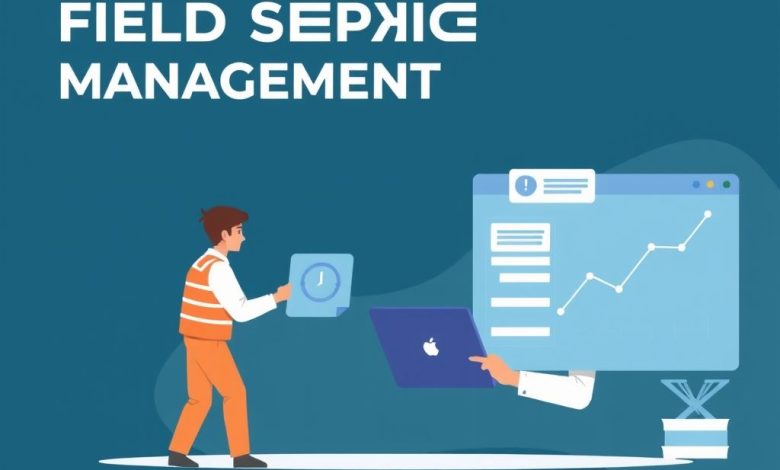Field Service Management with Auto-Estimated Time-of-Arrival Revolutionizing Customer Experience and Operational Efficiency

Introduction
Field Service Management (FSM) is a critical component of many businesses, particularly in industries such as HVAC, electrical work, plumbing, and home maintenance. It involves managing and coordinating the activities of field technicians who provide services directly to customers. In today’s fast-paced world, where customer satisfaction and efficiency are paramount, FSM has evolved significantly over the years. One of the most impactful innovations in this field is the integration of auto-estimated time-of-arrival (ETA) technology.
The Evolution of Field Service Management
Traditionally, FSM relied heavily on manual processes and guesswork when it came to estimating arrival times. Technicians would often call customers to inform them of their estimated arrival time, which was based on their experience and current workload. This method had several drawbacks:
- Lack of accuracy: Estimates were often incorrect due to unforeseen circumstances like traffic jams or equipment failures.
- Poor communication: Customers were frequently left waiting or arrived before the technician, leading to inconvenience and frustration.
- Inefficient resource allocation: Without real-time data, dispatchers struggled to optimize routes and allocate resources effectively.
The Rise of Auto-Estimated Time-of-Arrival Technology
Auto-estimated time-of-arrival technology has revolutionized the way field service companies operate. This innovative approach uses advanced algorithms and real-time data to predict arrival times more accurately than ever before. Here’s how it works:
Data Collection and Analysis
The system collects various types of data, including:
- Current location of the technician
- Traffic conditions along the route
- Weather updates
- Historical data on similar jobs in the area
- Real-time updates from other vehicles in the fleet
This data is then analyzed using sophisticated algorithms to calculate the most likely arrival time.
Benefits of Auto-Estimated Time-of-Arrival
Implementing auto-estimated time-of-arrivals offers numerous advantages to both the service provider and the customer:
- Improved Accuracy: By considering multiple factors beyond just driving distance, ETA predictions become much more accurate.
- Enhanced Customer Experience: Customers receive more reliable estimates, reducing anxiety and improving overall satisfaction.
- Increased Efficiency: Dispatchers can better plan schedules and allocate resources, leading to improved operational efficiency.
- Cost Savings: Reduced wait times and optimized routes result in lower fuel consumption and reduced labor costs.
- Competitive Advantage: Companies that implement this technology stand out from competitors who still rely on traditional methods.
Implementation Strategies
For field service managers looking to integrate auto-estimated time-of-arrival technology into their operations, here are some key considerations:
Choosing the Right Solution
When selecting an auto-estimated time-of-arrival solution, consider the following factors:
- Compatibility with existing systems
- Ease of use for both technicians and dispatchers
- Scalability to accommodate growth
- Integration capabilities with other FSM tools
Popular solutions include dedicated FSM software platforms and mobile apps designed specifically for this purpose.
Training and Adoption
Successful implementation requires thorough training for all staff members involved:
- Technicians need to understand how to input accurate job details and respond to notifications.
- Dispatchers must learn how to interpret and act upon the ETA predictions.
- Management should be trained on how to monitor the system's performance and make necessary adjustments.
Continuous Improvement
To maximize the benefits of auto-estimated time-of-arrival technology, regular monitoring and refinement are crucial:
- Analyze historical data to identify patterns and areas for improvement.
- Gather feedback from both technicians and customers to refine the algorithm.
- Stay updated with the latest advancements in transportation analytics and machine learning.
Challenges and Limitations
While auto-estimated time-of-arrival technology offers significant benefits, there are also challenges to consider:
External Factors
Unforeseen events like accidents, road closures, or severe weather can disrupt even the best-laid plans. The system may struggle to account for these exceptions, potentially leading to inaccuracies.
Privacy Concerns
Some customers may have concerns about their personal data being used to estimate arrival times. Field service managers must ensure compliance with data protection regulations and maintain transparency with customers.
Technical Issues
Like any digital system, there’s always a risk of technical glitches or connectivity problems. A robust backup system and clear communication protocols are essential to mitigate these risks.
Conclusion
Field Service Management with auto-estimated time-of-arrival technology represents a significant leap forward in operational efficiency and customer satisfaction. As this technology continues to evolve, we can expect even more precise predictions and integrated features that further streamline the field service process.
For field service managers, embracing this innovation not only improves day-to-day operations but also positions their company at the forefront of industry standards. As the demand for efficient and responsive service continues to grow, those who invest in cutting-edge technology will be well-equipped to meet these expectations and thrive in an increasingly competitive market.
By leveraging auto-estimated time-of-arrival technology, field service companies can transform their operations, delight their customers, and establish themselves as leaders in their respective fields.




